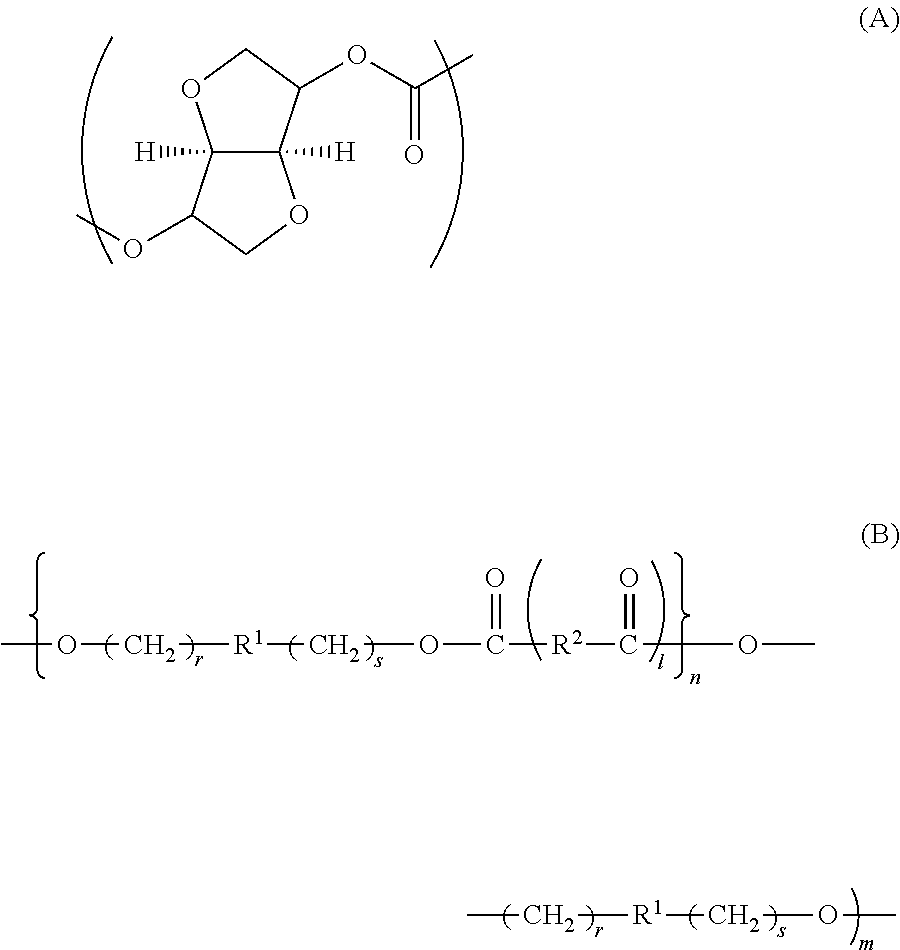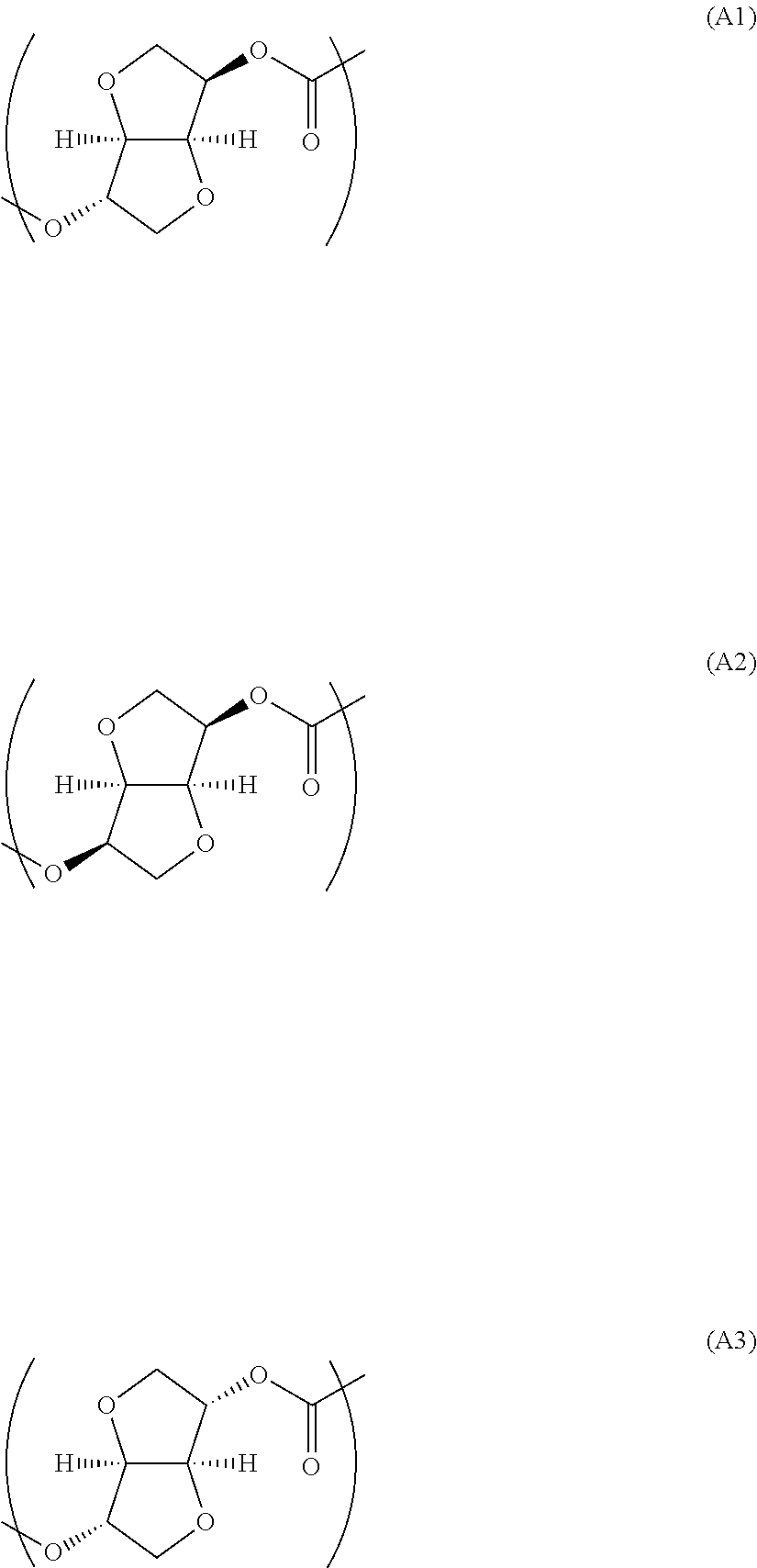Copolycarbonate
a technology of copolycarbonate and carbon dioxide, applied in the field of copolycarbonate, can solve the problems of low crystallinity, poor moldability, increase in carbon dioxide, etc., and achieve the effects of low water absorption coefficient, excellent heat resistance, and low temperature characteristics and surface hardness
- Summary
- Abstract
- Description
- Claims
- Application Information
AI Technical Summary
Benefits of technology
Problems solved by technology
Method used
Image
Examples
example 1
[0220]436 parts of isosorbide (to be abbreviated as ISS hereinafter), 65 parts of 1,8-octanediol (to be abbreviated as OD hereinafter), 750 parts of diphenyl carbonate (to be abbreviated as DPC hereinafter), and 0.8×10−2 part of tetramethylammonium hydroxide and 0.6×10−4 part of sodium hydroxide as catalysts were heated at 180° C. in a nitrogen atmosphere to be molten. Thereafter, the pressure was reduced to 13.4 kPa over 30 minutes. Then, the temperature was raised to 250° C. at a rate of 60° C. / hr and kept at that temperature for 10 minutes, and the pressure was further reduced to 133 Pa or lower over 1 hour. A reaction was carried out under agitation for a total of 6 hours, and the reaction product was discharged from the bottom of a reactor under nitrogen increased pressure and cut by a pelletizer while it was cooled in a water tank to obtain a pellet after the end of the reaction. The evaluation results are shown in Table 1.
example 2
[0221]The same operation and the same evaluations as in Example 1 were carried out except that 441 parts of ISS, 66 parts of 1,9-nonanediol (to be abbreviated as ND hereinafter) and 750 parts of DPC were used as raw materials. The results are shown in Table 1.
example 3
[0222]The same operation and the same evaluations as in Example 2 were carried out except, that 71 parts of 1,10-decanediol (to be abbreviated as DD hereinafter) was used in place of ND. The results are shown in Table 1.
PUM
| Property | Measurement | Unit |
|---|---|---|
| glass transition temperature | aaaaa | aaaaa |
| saturation water absorption coefficient | aaaaa | aaaaa |
| breaking energy | aaaaa | aaaaa |
Abstract
Description
Claims
Application Information
 Login to View More
Login to View More - R&D
- Intellectual Property
- Life Sciences
- Materials
- Tech Scout
- Unparalleled Data Quality
- Higher Quality Content
- 60% Fewer Hallucinations
Browse by: Latest US Patents, China's latest patents, Technical Efficacy Thesaurus, Application Domain, Technology Topic, Popular Technical Reports.
© 2025 PatSnap. All rights reserved.Legal|Privacy policy|Modern Slavery Act Transparency Statement|Sitemap|About US| Contact US: help@patsnap.com



